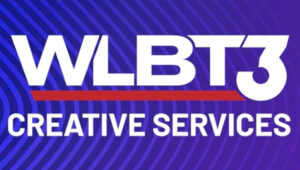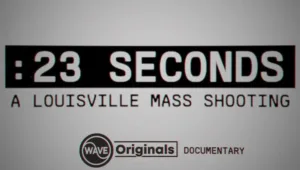Two Important Lessons For TV Broadcasters
 It seems to be human nature to fail to grasp the concept of exponential growth, but if broadcasters wish to succeed as they face new competition they must grasp how the concept doesn’t — but should — apply to them and the over-the-air service they deliver.
It seems to be human nature to fail to grasp the concept of exponential growth, but if broadcasters wish to succeed as they face new competition they must grasp how the concept doesn’t — but should — apply to them and the over-the-air service they deliver.
Could 3.0 Kill TV’s Retrans Golden Goose?

“This is about knowing the truth regarding who is watching, what they’re watching and when they’re watching,” said David Smith, president-CEO of Sinclair. “Data gathering, measurement and behavior is too important for us not to have a reliable system and there is an immediacy to have this in place to coincide with the rollout of ATSC 3.0. Sinclair and ONE Media 3.0 intend to build it and make it available to the industry. We are currently working with device manufacturers and will shortly identify a test market in which to conduct live field trials.”
A key driver of OTA growth comes from cord-cutters or cord-nevers who relied on internet subscription services, then discovered that their HDTVs already receive free, local television through a cheap antenna. Ironically, it turns out that broadband — still thought by some to be the killer of television — has become a kind of gateway drug for cord-cutting. The key for public television stations is to integrate broadcasting with the internet, which the ATSC 3.0, the next-generation TV standard, is explicitly designed to enable when broadcasters begin adopting it in 2018.
 Proponents of the next-gen TV transmission standard simulcast Game 2 of the World Series last night with ATSC 3.0 using an experimental license (on ch. 31) and the transmission facilities of Tribune’s WJW Cleveland, the local Fox affiliate.
Proponents of the next-gen TV transmission standard simulcast Game 2 of the World Series last night with ATSC 3.0 using an experimental license (on ch. 31) and the transmission facilities of Tribune’s WJW Cleveland, the local Fox affiliate.
AWARN Alerting: An ATSC 3.0 Business Model
 The Advanced Warning and Response Network (AWARN) based on ATSC 3.0 will save lives and renew broadcasters’ role as “first informers.” It turns out that the first AWARN alert prototypes are also pioneering some of the core business enhancements and new services that promise major financial upsides for the television broadcasting industry.
The Advanced Warning and Response Network (AWARN) based on ATSC 3.0 will save lives and renew broadcasters’ role as “first informers.” It turns out that the first AWARN alert prototypes are also pioneering some of the core business enhancements and new services that promise major financial upsides for the television broadcasting industry.
 The CEO of Fox Television Stations and co-president of Fox News Channel joins David Smith of Sinclair Broadcast Group, Perry Sook of Nexstar Broadcasting Group and Pat LaPlatney of Raycom Media on a CEO panel at TVNewsCheck’s TV2020: Monetizing ATSC 3.0 conference in New York on Nov. 9-10.
The CEO of Fox Television Stations and co-president of Fox News Channel joins David Smith of Sinclair Broadcast Group, Perry Sook of Nexstar Broadcasting Group and Pat LaPlatney of Raycom Media on a CEO panel at TVNewsCheck’s TV2020: Monetizing ATSC 3.0 conference in New York on Nov. 9-10.
Wertlieb: Public Safety Demands ATSC 3.0
 Jordan Wertlieb, president of Hearst Television: “Whether it is severe weather events like Hurricane Matthew, tornadoes in the Midwest or domestic terrorist attacks, local broadcasters are the lifeline of support. Next Generation Television (ATSC 3.0) offers the opportunity for our communication lifeline to be upgraded to the latest technology. The television industry has worked hard to finalize a next-generation standard and the time is now for the FCC to approve this new standard.”
Jordan Wertlieb, president of Hearst Television: “Whether it is severe weather events like Hurricane Matthew, tornadoes in the Midwest or domestic terrorist attacks, local broadcasters are the lifeline of support. Next Generation Television (ATSC 3.0) offers the opportunity for our communication lifeline to be upgraded to the latest technology. The television industry has worked hard to finalize a next-generation standard and the time is now for the FCC to approve this new standard.”
“ATSC 3.0 is rounding third base and heading into the home stretch,” says Anne Schelle, managing director of Pearl TV, a consortium of leading station groups that backs 3.0 and commissioned the guide that spells out how stations can efficiently make the move to the next-gen transmission standard.
Uncertain Political Is Broadcast Wake-Up Call

Chapman To Kick Off ATSC 3.0 Conference
 The Accenture consultant will set the stage for TVN’s TV2020, a day-long discussion on the challenges and opportunities of Next Gen TV with a clear-eyed look at the expanding TV ecosystem and broadcasting’s place in it.
The Accenture consultant will set the stage for TVN’s TV2020, a day-long discussion on the challenges and opportunities of Next Gen TV with a clear-eyed look at the expanding TV ecosystem and broadcasting’s place in it.

 At this year’s media tech compendium in Amsterdam, there was greater cooperation among vendors to ensure IP interoperability. On the business front, there was talk of zoned advertising and hyperlocal content delivery over the air with OFDM-based transmission systems such as ATSC 3.0. And on the technology frontier, all of the work to make Ultra HD a reality has begun to pay off with real-world applications, novel 360-degree acquisition (see the Nokia Ozo camera above) and new 8K implementations of OLED display technology.
At this year’s media tech compendium in Amsterdam, there was greater cooperation among vendors to ensure IP interoperability. On the business front, there was talk of zoned advertising and hyperlocal content delivery over the air with OFDM-based transmission systems such as ATSC 3.0. And on the technology frontier, all of the work to make Ultra HD a reality has begun to pay off with real-world applications, novel 360-degree acquisition (see the Nokia Ozo camera above) and new 8K implementations of OLED display technology.
 One highlight of TVNewsCheck’s Nov. 9-10 TV2020 conference on the prospects for Next Gen TV will be the CEO panel featuring David Smith of Sinclair Broadcast Group, Perry Sook of Nexstar Broadcasting Group and Pat LaPlatney of Raycom Media.
One highlight of TVNewsCheck’s Nov. 9-10 TV2020 conference on the prospects for Next Gen TV will be the CEO panel featuring David Smith of Sinclair Broadcast Group, Perry Sook of Nexstar Broadcasting Group and Pat LaPlatney of Raycom Media.
 The conference, to be held Nov. 9-10 at NAB Show New York, will offer broadcasters, investors and financial analysts a high-level look at the ROI in launching the new, advanced transmission standard.
The conference, to be held Nov. 9-10 at NAB Show New York, will offer broadcasters, investors and financial analysts a high-level look at the ROI in launching the new, advanced transmission standard.
Stations, Tech Cope With Likely Repack Delay
 Since it looks like the FCC will have to repeat its two-part incentive auction process to balance the money promised to broadcasters with what is raised from wireless carriers,broadcasters and their technology suppliers remain in the dark longer about which stations will have to move in the repack and to which channels. But that’s not necessarily a bad thing. It could help sync up the repack with an ATSC 3.0 rollout and provide more time to create the 36-month repack schedule. Some vendors say they could use the extra time to prepare for the expected demand. Read the second part of this Special Report here.
Since it looks like the FCC will have to repeat its two-part incentive auction process to balance the money promised to broadcasters with what is raised from wireless carriers,broadcasters and their technology suppliers remain in the dark longer about which stations will have to move in the repack and to which channels. But that’s not necessarily a bad thing. It could help sync up the repack with an ATSC 3.0 rollout and provide more time to create the 36-month repack schedule. Some vendors say they could use the extra time to prepare for the expected demand. Read the second part of this Special Report here.
Papers: A Medium You Don’t Want To Follow

Diversification: Broadcasting’s New Alter Ego

The South Korean government has selected ATSC 3.0, the next-generation TV standard developed by the Advanced Television Systems Committee, as the nation’s standard for OTA UltraHD TV broadcasting, according to the Yonhap News Agency.
MPEG-2 Still Kicking, Ready For Last Big Push
 MPEG-2 compression has proven itself to be a workhorse for the television industry, enabling DTV multicasting channel count to grow with successive generations of encoders. In its closing act, the compression technique has enough performance left to help make the spectrum repack a success and position the industry for a successful transition to a next-generation TV standard. This is Part 4 of a four-part special report on multicasting. Parts 1, 2 and 3 appeared yesterday. You can read the other stories here.
MPEG-2 compression has proven itself to be a workhorse for the television industry, enabling DTV multicasting channel count to grow with successive generations of encoders. In its closing act, the compression technique has enough performance left to help make the spectrum repack a success and position the industry for a successful transition to a next-generation TV standard. This is Part 4 of a four-part special report on multicasting. Parts 1, 2 and 3 appeared yesterday. You can read the other stories here.
Rick Kaplan: “NAB commends the commission for moving with such speed to lay the groundwork for the next generation of wireless services. We hope the commission will move at least as quickly when it comes to the next generation of television service. In fact, the Next Generation TV proceeding should be much easier; the commission does not need to authorize new spectrum sharing regimes or provide broadcasters with additional spectrum.”
 In a couple of weeks, Sinclair Broadcast Group will open an upgraded ATSC 3.0 testing lab in Baltimore to design and test a national network based on the next-generation standard and the services that will run on it.
In a couple of weeks, Sinclair Broadcast Group will open an upgraded ATSC 3.0 testing lab in Baltimore to design and test a national network based on the next-generation standard and the services that will run on it.
Goodmon Jr.: 3.0 Points Way To Bright Future
 Capitol Broadcasting’s new media chief, Jim Goodmon Jr., says: “ATSC 3.0 represents the next generation of television, but I think it’s a little bit bigger than that.” It means broadcasting will no longer be looked at “as this outmoded, outdated technology” since OTA TV will deliver the highest quality picture, go mobile as well as interactive. The move to 3.0, he says,” is going to be unique [because] broadcasters will have to work together in ways we have never done before. We will really have to put our heads together and cooperate.”
Capitol Broadcasting’s new media chief, Jim Goodmon Jr., says: “ATSC 3.0 represents the next generation of television, but I think it’s a little bit bigger than that.” It means broadcasting will no longer be looked at “as this outmoded, outdated technology” since OTA TV will deliver the highest quality picture, go mobile as well as interactive. The move to 3.0, he says,” is going to be unique [because] broadcasters will have to work together in ways we have never done before. We will really have to put our heads together and cooperate.”
WRAL Launches ATSC 3.0 Service
 Today at noon, the Capitol Broadcasting-owned NBC affiliate in Raleigh-Durham, N.C., began transmission of a next-gen ATSC 3.0 signal on ch. 39 under an experimental license from the FCC.
Today at noon, the Capitol Broadcasting-owned NBC affiliate in Raleigh-Durham, N.C., began transmission of a next-gen ATSC 3.0 signal on ch. 39 under an experimental license from the FCC.
 While the current MPEG transport stream has worked well, it’s time for a change that will let over-the-air TV broadcasting break free from its own self-imposed silo and transition into something “that could be thought of as an extension of the internet,” according to Triveni Digital’s Rich Chernock. He details the ways such a change could benefit both broadcasters and viewers.
While the current MPEG transport stream has worked well, it’s time for a change that will let over-the-air TV broadcasting break free from its own self-imposed silo and transition into something “that could be thought of as an extension of the internet,” according to Triveni Digital’s Rich Chernock. He details the ways such a change could benefit both broadcasters and viewers.
Stations Should Plan ATSC 3.0 Strategy Now

Hitachi-Comark’s Fiore Talks Repack, 3.0
 Broadcasters are keenly interested in understanding their transmitter options to satisfy the requirements of the TV spectrum repack and positioning themselves for an easy transition to ATSC 3.0 if and when that becomes a reality. Dick Fiore, CEO of Hitachi-Comark, discusses both as well as total cost of ownership, SFNs in a 3.0 world and the importance of broadcasters supporting 3.0 as the FCC considers authorization.
Broadcasters are keenly interested in understanding their transmitter options to satisfy the requirements of the TV spectrum repack and positioning themselves for an easy transition to ATSC 3.0 if and when that becomes a reality. Dick Fiore, CEO of Hitachi-Comark, discusses both as well as total cost of ownership, SFNs in a 3.0 world and the importance of broadcasters supporting 3.0 as the FCC considers authorization.
Game On For Broadcast: Auction, Repack, 3.0

NCTA tells the FCC that any new rules should not require cable systems to carry 3.0 signals during the transition from the current DTV system to 3.0. The trade group also says systems should not be burdened with new carriage obligations or costs and the host station should be required to broadcast in HD.
ATSC 3.0 has turned out to be a multimedia standard that’s capable of providing television, radio and digital content. This makes it as potentially important to “over-the-top” media distribution as it is to broadcast television.
 Many of the same app developers focused on the web today will help bring interactivity to ATSC 3.0 viewers in the future thanks to the standard’s W3C compliance and clever use of broadcast, broadband and non-real-time content in the home. Above, NAB’s So Vang demos the interactive in-home experience offered by 3.0 in the NAB Futures Zone during the NAB Show last month.
Many of the same app developers focused on the web today will help bring interactivity to ATSC 3.0 viewers in the future thanks to the standard’s W3C compliance and clever use of broadcast, broadband and non-real-time content in the home. Above, NAB’s So Vang demos the interactive in-home experience offered by 3.0 in the NAB Futures Zone during the NAB Show last month.































